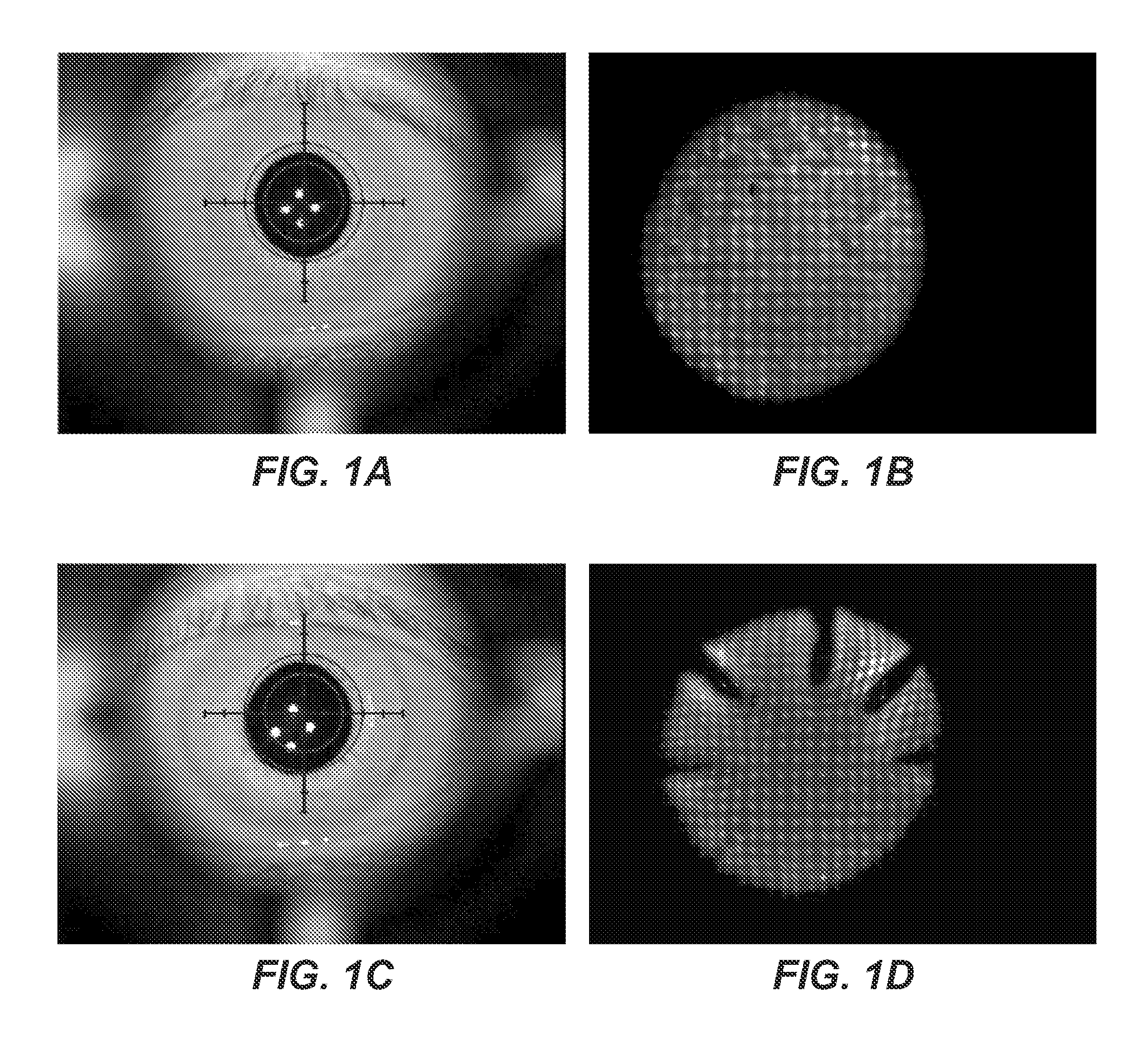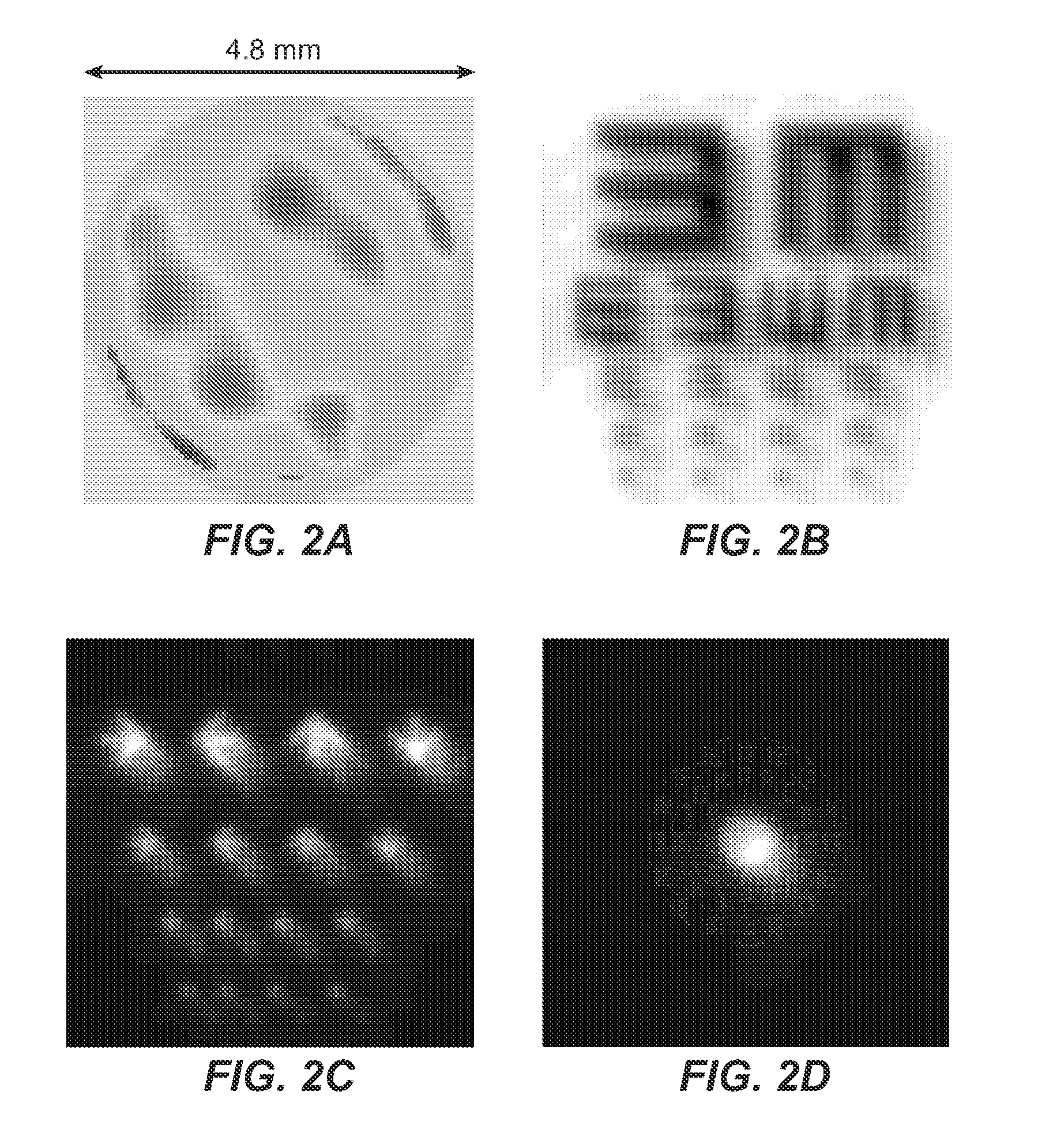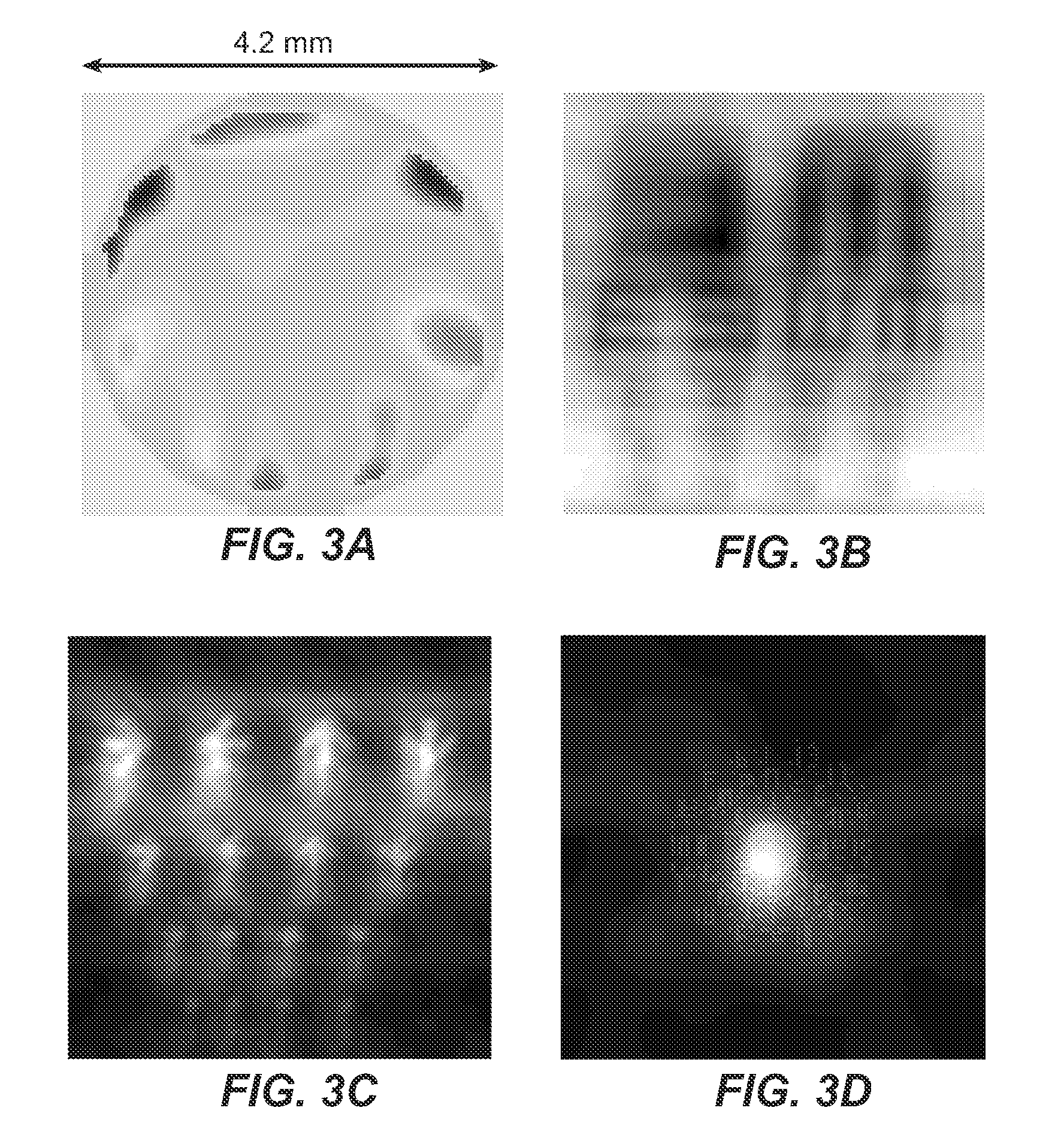Even though it is possible to correct high-order aberrations in human eyes with
adaptive optics in the laboratories, effective correction of eye's high-order aberrations is still a challenging task for clinical procedures such as
wavefront-guided
laser vision corrections,
wavefront-guided contact lenses, and
wavefront-guided spectacles.
Clinical procedures can hardly match the performances of an
adaptive optics system in precision (less than one tenth of
wavelength), in wavefront registration between the wavefront measurement and the wavefront correction, and in closed-
loop control of uncorrected wavefront errors.
Wound-healing is another factor limiting the success of wavefront-guided
laser vision corrections.
Without an effective means for correcting high-order aberrations in the eye, many eyes suffer from aberration-induced symptoms such as glare, halo, ghost images, and starburst.
Both of these surgical eyes (eyes having received
refractive surgery) have serious night vision symptoms, which can create problems when driving at night.
It is clearly seen that the eye can barely recognize the acuity letter because of image blurs caused by uncorrected high-order aberrations.
Even though these surgical eyes have acceptable
visual acuity of 20 / 40 or better, they are suffering from various vision symptoms that have never been diagnosed clinically.
First, vision of these surgical eyes cannot be restored by additional
laser vision correction because damages were made in the corneal surfaces.
Second, aberrations in these surgical eyes are not correctable by conventional sphero-cylindrical corrections using refractive glasses, contact lenses and
intraocular lenses.
Even though effective with spectacles, contact lenses and intro-ocular lenses, conventional sphero-cylindrical corrections have a number of limitations.
First, night vision can be poor for eyes with significant high-order aberrations that are not corrected in conventional corrections.
It is not surprising to find that these lenses with controlled pupil transmittance (CPT) have not found any clinical acceptance yet because successful commercialization of lenses with CPT must overcome a number of fundamental obstacles.
First, all lenses with CPT reduce total light into the eye and impacts of reduced
retinal luminance has not been properly studied.
But there is no known method in the prior art is capable of these complicated tasks.
Acceptance of these color contact lenses is very limited (about 3%) partially because they do not work well for night vision or at low-light conditions.
Therefore, conventional opaque color contact lenses are not appropriate for wearing at night because they can cause vision symptoms like ghost images, halos, or glare for night vision.
Conventional tinted lenses are limited for at least two reasons.
First, tinted lenses can only alter iris color slightly for eyes with light iris because
reflectivity of the tinted lenses cannot be too high (often less than 20%).
Otherwise, tinted contact lenses with
high reflectivity will have problems for low-light vision because of reduced luminance efficiency.
Second, tinted color contact lenses are not favored for night vision because they reduce total light into the eye and do not reduce contribution of image blur caused by high-order aberrations.
Although methods for making other cosmetic and therapeutic contact lenses such as a
contact lens with a restricted pupil sizes were disclosed in U.S. Pat. No. 3,536,386, which issued to Spivack more than 30 years ago, clinical practice with Spivack's lenses is believed not to have been possible for at least three reasons.
First, it is generally clinically impractical to prescribe a contact lens with a restricted
pupil size if all the determining factors like image intensity,
image quality,
field of view, and
visual acuity must be measured and compared clinically for different pupil sizes.
Reducing retinal intensity for night vision is fundamentally negative for night vision performance.
Third, the
pupil size for the best
retinal image quality is about 3 mm for an average eye and a contact lens with a restricted pupil size of 3 mm for normal human eyes is generally not acceptable because of a low light efficiency and a reduced
field of view.
Rigid
intraocular lenses are usually inexpensive, but generally not favored in cataract surgeries because they require a large incision and stitches.
Even though
cataract surgery is a mature procedure and performed routinely, a person's vision after receiving a conventional
intraocular lenses is not always trouble-free, particularily at night when the person's pupil size is relatively large as compared to it size in
daylight.
Further, replacing the natural lens of an eye with a man-made lens can increase high-order
aberrations of the eye and cause degraded night vision for many people.
People who have had
cataract surgery and have received an
intraocular lens typically wear spectacles or contact lenses because most intraocular lenses do not have the capability to accommodate focus power at different distances.
Despite its success in achieving acceptable acuity for near and far vision, multifocal intraocular lenses often increase chances for night vision symptoms like glare, halo and ghost images.
Therefore, even though a person having a
multifocal intraocular lens can pass driver's vision tests and read text without any refractive correction, driving at night with a multifocal lens can be problematic due to potential night vision symptoms.
The optical lens cannot be too big to be implanted through a
small incision because the lens is either a rigid lens or a semi-flexible lens.
A large lens also is hard to move to effect the accomodation because of its large surface.
If the
accommodation is achieved through deformation of a semi-flexible lens, a large lens requires a strong force to deform and can create additional high-order aberrations.
Further, the lens cannot be too small or it may cause night vision symptoms.
 Login to View More
Login to View More  Login to View More
Login to View More 


